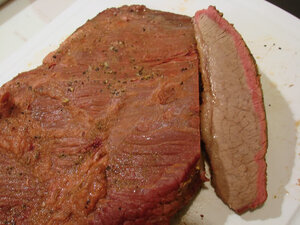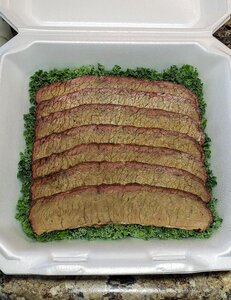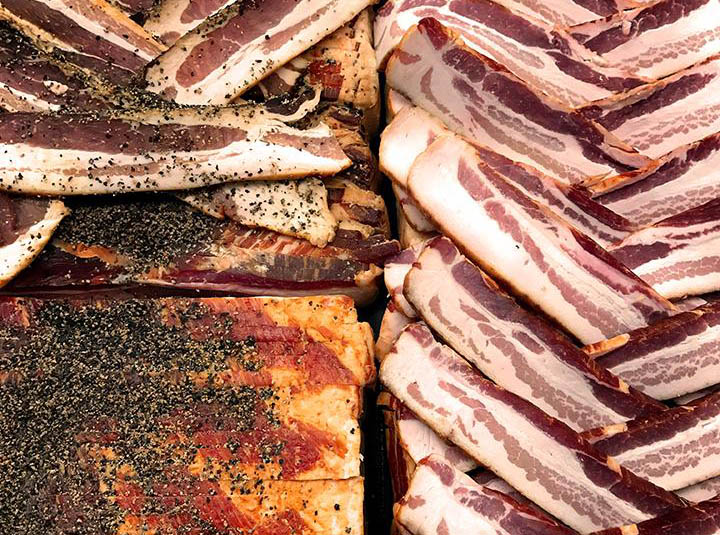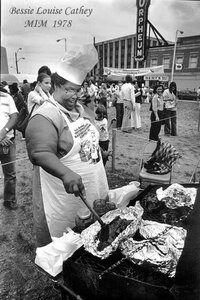chef jimmyj
Gone but not forgotten. RIP
Original poster
OTBS Member
SMF Premier Member
★ Lifetime Premier ★
- May 12, 2011
- 22,167
- 7,168
How Much Nitrite is Dangerous
According to the report prepared in 1972 for the U.S. Food and Drug Administration (FDA) by Battele-Columbus Laboratories and Department of Commerce, Springfield, VA 22151 – the fatal dose of potassium Nitrate for humans is in the range of 30 to 35 grams (about two tablespoons) consumed as a single dose; the fatal dose of sodium nitrite is in the range of 22 to 23 milligrams per kilogram of body weight. A 156 lbs adult (71 kg) would have to consume 14.3 pounds (6.5 kg) of cured meat containing 200 ppm of sodium nitrite at one time. Taking into consideration that nitrite is rapidly converted to nitric oxide during the curing process, the 14.3 lbs amount will have to be doubled or even tripled. The equivalent amount of pure sodium nitrite consumed will be 1.3 g. One gram (1 ppm) of pure sodium nitrite is generally accepted as a life threatening dose.
As nitrite is mixed with large amounts of salt, it would be impossible to swallow it at least from a culinary point of view. Besides, our cures are pink and it would be very hard to mistake them for common salt.
The following information comes from the book “Meat Through the Microscope” written by C.Robert Moulton, Ph.D. and W.Lee Lewis, Ph.D. and published by Institute of Meat Packing, The University of Chicago:
Soaking reduced the curing agents in most of the sub-sections (sliced ham-our note) but especially in the butt and face sections. Smoking had little effect on the salt, nitrate and sugar content but the nitrite content was decreased. Baking reduced the percentages of all curing ingredients but the nitrite was so greatly reduced that the highest value found was only 11 parts per million. Table 66 gives the average composition of the five whole hams and shows clearly the effects of soaking, smoking and baking.
Effect of Operations on Composition of Hams
(WOW That'she some Salty Ham...JJ)
To emphasize the importance of these results, and especially of the very great destruction of nitrite by baking, one should remember in contrast that sweet-pickle solutions will contain from 500 to 1000 parts of nitrite per million and that the surface of hams removed from such pickles, especially at the ragged edges of the butt, will most certainly contain over 200 p.p.m. However, after soaking and smoking the average nitrite content is well within the prescribed limits. In the survey summarized above only two out of 10 surface sections showed over 200 p.p.m. of nitrite. In spite of the figures given in the first part of this paragraph, no subsection of surface meat showed more than 11 p.p.m. after baking.
By the time meats are consumed, they contain less then 50 parts per million of nitrite. It is said that commercially prepared meats in the USA contain about 10 ppm of nitrite when bought in a supermarket.
FROM this Highly Respected infomation.
 www.meatsandsausages.com
www.meatsandsausages.com
According to the report prepared in 1972 for the U.S. Food and Drug Administration (FDA) by Battele-Columbus Laboratories and Department of Commerce, Springfield, VA 22151 – the fatal dose of potassium Nitrate for humans is in the range of 30 to 35 grams (about two tablespoons) consumed as a single dose; the fatal dose of sodium nitrite is in the range of 22 to 23 milligrams per kilogram of body weight. A 156 lbs adult (71 kg) would have to consume 14.3 pounds (6.5 kg) of cured meat containing 200 ppm of sodium nitrite at one time. Taking into consideration that nitrite is rapidly converted to nitric oxide during the curing process, the 14.3 lbs amount will have to be doubled or even tripled. The equivalent amount of pure sodium nitrite consumed will be 1.3 g. One gram (1 ppm) of pure sodium nitrite is generally accepted as a life threatening dose.
As nitrite is mixed with large amounts of salt, it would be impossible to swallow it at least from a culinary point of view. Besides, our cures are pink and it would be very hard to mistake them for common salt.
The following information comes from the book “Meat Through the Microscope” written by C.Robert Moulton, Ph.D. and W.Lee Lewis, Ph.D. and published by Institute of Meat Packing, The University of Chicago:
Soaking reduced the curing agents in most of the sub-sections (sliced ham-our note) but especially in the butt and face sections. Smoking had little effect on the salt, nitrate and sugar content but the nitrite content was decreased. Baking reduced the percentages of all curing ingredients but the nitrite was so greatly reduced that the highest value found was only 11 parts per million. Table 66 gives the average composition of the five whole hams and shows clearly the effects of soaking, smoking and baking.
Effect of Operations on Composition of Hams
| Stage | Salt % | Sugar % | Nitrate % | Nitrite p.p.m. | Water % |
|---|---|---|---|---|---|
| Out of cure | %Salt 4.93 | %Sugar 0.79 | %Nitrate 0.057 | PpmNitrite 138 | %Water 65 |
| Soaked | 4.60 | 0.72 | 0.048 | 115 | 67 |
| Smoked | 5.15 | 0.76 | 0.060 | 80 | 65 |
| Baked | 4.30 | 0.63 | 0.050 | 2 | 56 |
(WOW That'she some Salty Ham...JJ)
To emphasize the importance of these results, and especially of the very great destruction of nitrite by baking, one should remember in contrast that sweet-pickle solutions will contain from 500 to 1000 parts of nitrite per million and that the surface of hams removed from such pickles, especially at the ragged edges of the butt, will most certainly contain over 200 p.p.m. However, after soaking and smoking the average nitrite content is well within the prescribed limits. In the survey summarized above only two out of 10 surface sections showed over 200 p.p.m. of nitrite. In spite of the figures given in the first part of this paragraph, no subsection of surface meat showed more than 11 p.p.m. after baking.
By the time meats are consumed, they contain less then 50 parts per million of nitrite. It is said that commercially prepared meats in the USA contain about 10 ppm of nitrite when bought in a supermarket.
FROM this Highly Respected infomation.
Nitrates
When we used salt with a higher nitrate content the meat had a different taste and color









